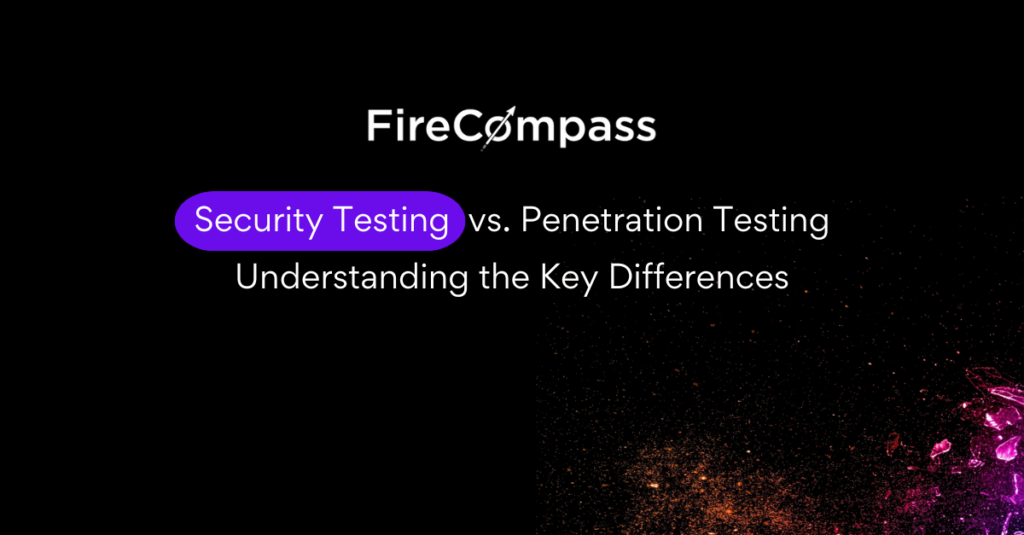Security testing and penetration testing are two essential components of a robust cybersecurity strategy. However, many people often confuse them, thinking they are interchangeable terms. In reality, while they share some similarities, they serve different purposes and employ distinct methodologies. Understanding these differences is crucial for any organization aiming to secure its digital assets effectively.
What is Security Testing?
Security testing is a broad term that encompasses various methods used to identify vulnerabilities in an organization’s systems, applications, and network infrastructure. The primary goal of security testing is to uncover weaknesses that could be exploited by malicious actors, allowing organizations to strengthen their defenses.
Security testing can be categorized into several types, including:
- Static Analysis: This involves reviewing code or configurations without executing the application. Tools like SonarQube and Veracode are often employed in this phase to detect vulnerabilities in the source code.
- Dynamic Analysis: This method evaluates the application while it is running, simulating real-world attacks to identify vulnerabilities. Tools such as Burp Suite and OWASP ZAP play a crucial role in this type of testing.
- Vulnerability Scanning: Automated tools scan systems for known vulnerabilities. Commonly used tools include Nessus, OpenVAS, and Qualys.
- Risk Assessment: This process identifies potential risks associated with vulnerabilities and helps prioritize them based on their impact and likelihood of exploitation.
- Security Auditing: This comprehensive examination assesses compliance with security policies and regulations, often involving a detailed review of security controls and procedures.
The overarching aim of security testing is to ensure that systems are resilient against potential attacks, protecting sensitive data and maintaining functionality.
What is Penetration Testing?
Penetration testing, or pentesting, is a specialized form of security testing. It simulates real-world attacks on a system, network, or application to identify exploitable vulnerabilities. The primary objective of penetration testing is to assess the effectiveness of security measures and determine how much damage an attacker could inflict if they exploited a particular vulnerability.
Penetration testing typically involves a series of steps, including:
- Pre-engagement: This initial phase involves discussions between the client and the testing team to define the scope, objectives, and rules of engagement.
- Reconnaissance: Testers gather information about the target system, including network architecture and services, using both active and passive methods.
- Scanning and Enumeration: In this phase, tools are employed to identify open ports, services, and potential vulnerabilities within the target environment.
- Exploitation: Testers attempt to exploit identified vulnerabilities to gain unauthorized access to systems, data, or applications.
- Post-exploitation and Reporting: After successfully exploiting vulnerabilities, the testing team documents their findings, detailing the vulnerabilities exploited, the data accessed, and recommended remediation steps.
- Remediation Testing: After fixes are applied, a follow-up test is often conducted to ensure that vulnerabilities have been addressed effectively.
Key Differences Between Security Testing and Penetration Testing
Understanding the distinctions between security testing and penetration testing is essential for organizations to choose the right approach for their cybersecurity needs.
| Aspect | Security Testing | Penetration Testing |
|---|---|---|
| Scope | Broad, covering various aspects of security. | Narrow, focused on exploiting specific vulnerabilities. |
| Objectives | Identify potential vulnerabilities and ensure compliance. | Simulate real attacks to understand impact and risk. |
| Approach | Proactive identification of vulnerabilities. | Reactive, simulating attacks to test defenses. |
| Depth of Assessment | May provide a surface-level understanding. | Offers in-depth assessment of specific vulnerabilities. |
| Exploitation | Generally does not involve exploitation. | Actively exploits vulnerabilities to assess impact. |
| Reporting | Provides a list of vulnerabilities and recommendations. | Detailed reports with risk assessments and remediation guidance. |
| Frequency | Regular audits are recommended. | Typically performed annually or bi-annually. |
FireCompass’s Automated Penetration Testing Capabilities
At FireCompass, we take penetration testing to the next level with our continuous automated penetration testing platform. Our solution continuously discovers 100% of your assets, finds critical risks within 24 hours, and validates your security controls. Here’s how FireCompass stands out:
- Continuous Discovery: Our platform automatically identifies and maps all assets in your organization, ensuring no hidden vulnerabilities go unnoticed.
- Rapid Risk Assessment: Within a day, our system can identify critical risks and provide you with actionable insights to remediate them.
- Automated Testing: By automating the penetration testing process, we significantly reduce the time and resources required while maintaining high accuracy.
- Real-time Validation: FireCompass allows organizations to validate their security controls continuously, ensuring that defenses remain effective against emerging threats.
- False Positive Removal & Prioritization: Our platform reduces alert fatigue and highlights the most critical issues by automatically categorizing threats based on their severity and removing false positives.
For more information on how FireCompass can help secure your organization, check out our offerings on Continuous Automated Penetration Testing and Penetration Testing as a Service (PTaaS).
Conclusion
In summary, both security testing and penetration testing are critical components of an effective cybersecurity strategy. While security testing provides a comprehensive overview of potential vulnerabilities, penetration testing dives deeper, simulating real-world attacks to assess the effectiveness of security measures. Organizations must understand the differences between these approaches and implement them accordingly to safeguard their digital assets.











